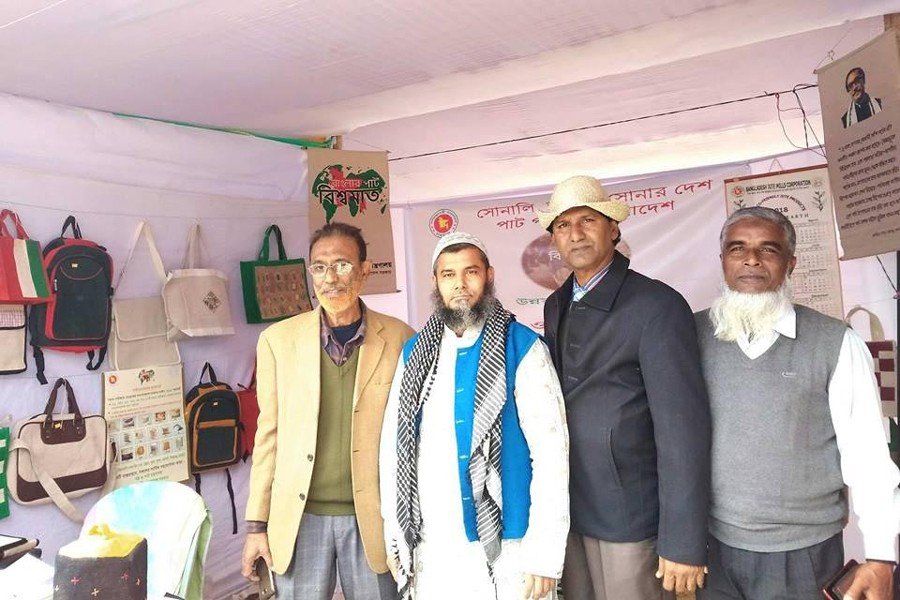The favourable climate in Bangladesh helps our farmers produce good quality jute, probably the best in the world. Now Bangladesh is the second largest exporter of raw jute globally, though once it was in the top position. Once, jute and jute goods were the top export earning sector of the country. But the situation has changed over the years as synthetic substitutes have grabbed a major portion of Bangladesh's jute and jute goods market in the world. It happened particularly during 1990s.
Now there is a ray of hope for revival of the jute sector as diversified use of jute goods is being promoted. The demand for new types of diversified jute products like blazers, money bags, calendars, hats, caps, hand bags, home textiles, household items, floor mats, carpets, non-woven textiles, shopping bags etc is very high in the international markets, as in the course of time consumers' choice has also changed.
The global market size of jute-made shopping bags is approximately 500 billion pieces. Due to the adverse impact of synthetic products on environment, jute-made shopping bags are witnessing a rising demand in the international market. Sensible people all over the world prefer non-synthetic products. Bangladesh can grab a big share of this huge market by adopting proper policies.
There are 133 diversified jute products and approximately 400 jute goods producers in Bangladesh, says a survey conducted by the Jute Diversification Promotion Centre (JDPC). But the problem is that it is very difficult for a small entrepreneur to survive the competition in the jute goods sector despite its bright prospect. Small entrepreneurs face many problems with supplying finished goods to their clients. Those include mainly fund shortage and difficulty in collecting raw materials.
At the beginning small entrepreneurs work as designers and workers as well to produce goods. They do everything themselves. Most of the small entrepreneurs have to work at factories of other persons to produce jute goods. Some of the entrepreneurs are less educated and have not passed SSC exams. Their investments are also very small. They face problems with access to bank loans. There are no specific markets where the raw materials can be sold and there are no skilled craftsmen. Despite all these hurdles they try seriously to succeed. But only those survive who are determined and can concentrate on their jobs properly.
If the government opens a design centre for jute goods, arranges training for the new entrepreneurs and sets up a market for selling their products, it will be easy for the small businesses in this field to stay in the race and fetch a greater volume of foreign currency for the country.
About 30 million people directly or indirectly depend on the jute sector for their living as 3.5 million farmers grow jute. If the government takes proper steps to woo local and foreign investors to invest in the sector, then it can regain its lost glory and be a large contributor to the foreign exchange basket. At the same time that will generate employment opportunities for many people in the country and thus help reduce the rate of crimes.
The author is proprietor of Craftvision.
Email: [email protected]


